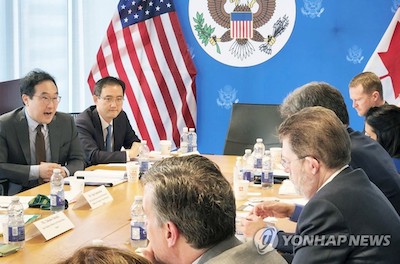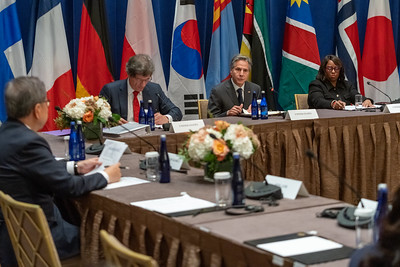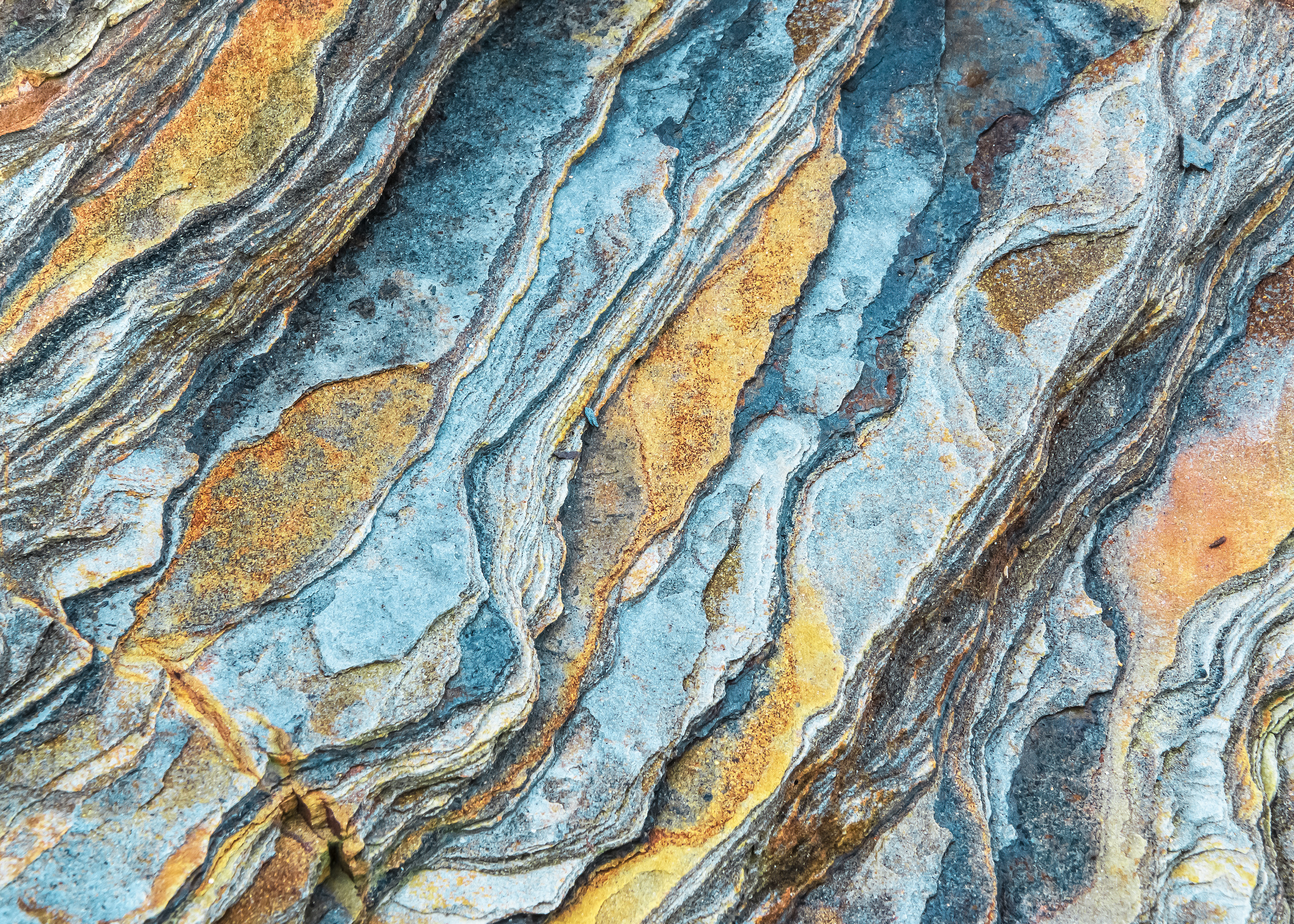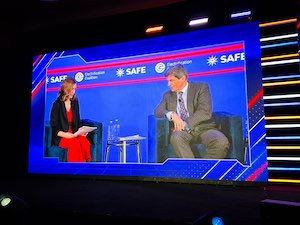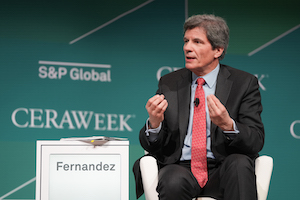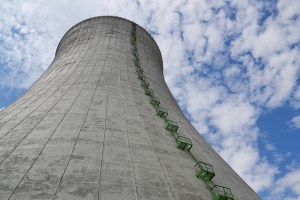Our association presented one Article in MBD 2022 Seminar held at Nagpur.
***************
NEED FOR VALUE ADDITION TO ABUNDANT BEACH MINERALS IN INDIA
TO ACHIEVE SELF-SUFFICIENCY IN CRITICAL MATERIALS
TO MEET “MAKE IN INDIA” OBJECTIVES
Sakthi Ganapathy
Secretary, Beach Minerals Producers Association
Email: bmpatamilnadu@gmail.com
ABSTRACT
India is endowed with abundant Beach Mineral reserves consisting of heavy minerals like ilmenite, garnet, rutile, zircon, sillimanite and monazite. Ilmenite and rutile are titanium minerals, garnet is an abrasive mineral, zircon is a high tech mineral and sillimanite is a refractory mineral. Monazite is a rare earth bearing mineral. India contains 30% of the world reserves of ilmenite and 70% of the monazite reserves of the world.
The value-added products of ilmenite are titanium dioxide, titanium metal and nano-titanium and these products find applications in paints, paper, plastics, rubber and cosmetics, aerospace components, industrial applications and medical implants, electronics, catalysts and material science. The value-added products of monazite find application in green energy, defense, electronic devices, computer components, aerospace, advance communication, health care etc.
The domestic production of value-added products based on these minerals does not commensurate with the available resources in the country and needs a boost for avoiding dependence on imports, mainly from China. Presently, the production and value addition of these minerals in India is at a very negligible scale and the bulk of the requirement is being imported. Challenges also exist in the value addition technologies. India has the capacity to overcome both the minerals production as well as the value addition problems.
Presently, the operation of the BSM sector in the country is reserved to the government sector and there seems to be no concrete plans to improve the performance of this industry by the government sector for the next few decades. Proper policy challenges and procedure modifications are needed in the country to achieve the “MAKE IN INDIA” goals in the country.
- Introduction
The titanium minerals ilmenite, rutile and leucoxene and the rare earth mineral monazite normally coexists with zircon, sillimanite and garnet. The entire suite of these minerals are normally classified as Beach Minerals due to the reason that the deposits containing these minerals were first identified on the beaches. Most of these minerals occur together, their individual contents varying from deposit to deposit. Ilmenite normally is the predominant mineral in the deposits. The BSM and their derivatives find applications in day to day use as well as strategic and high-tech applications. The exploitation of beach minerals deposits in India is not in consonance with the reserves. The Production to Reserve Ratio (PRR) is presently is 0.00156% which less than the world average of 0.00857%. In the last decade of the last century, it was less than 0.001% and improved to 0.004 during the year 2015, due to the opening of this sector in 1998 to wholly Indian owned companies.
It is unfortunate that this beach mineral sector does not receive the desired attention of the central and state governments due to the following facts:
The revenue to the governments is negligible compared to those from oil, coal, iron ore and limestone.
The strategic importance and application of these minerals is not explicitly visible.
The huge employment generation potential is not properly recognized.
The downstream industries possibilities are not recognized.
If proper recognition and encouragement are given by the central and state governments to beach minerals sector, it will turn out to be a successful “MAKE IN INDIA” program. This paper presents in detail the necessity to concentrate on the beach minerals sector in the interest of the development of our nation for self -sufficiency, reduction in import bill and dependance on our neighbor China.
- Reserves
Our country is endowed with 35% of the world reserves of Beach Minerals. The exploration in our country had covered only around 2000 km of our coastal stretch out of the country’s coastline of around 6000 km. If the balance coastline is also explored, our country’s share of the beach minerals will be enormous. The detailed world and Indian reserves estimates are given in Table-1.
Table – 1.
World and Indian reserves of Beach Minerals
| Sl. No. |
Mineral |
World Reserves in million tons |
Indian Reserves in million tons |
Percentage of world reserves |
| 1. |
Ilmenite |
1400 |
593 |
35 |
| 2. |
Sillimanite |
NA |
226 |
NA |
| 3. |
Garnet |
420 |
168 |
40 |
| 4. |
Zircon |
243 |
34 |
14 |
| 5. |
Monazite |
17 |
12 |
71 |
| 6. |
Rutile |
310 |
31 |
10 |
- History of Beach Minerals in India.
The beach minerals deposits mining in India is more than one century old. The first mining was started in 1908 when the beach sand containing monazite was mined and taken to European countries from the erstwhile Travancore state. Subsequently, processing facilities were set up to separate the minerals like monazite and ilmenite in Manavalakurichi presently in Tamil Nādu and Chavara, Kerala. Till 1965, only private players and some semi-government companies were in this field and the production and export was around 3.00 lakh tpa of ilmenite. After independence, considering the importance of monazite mineral for strategic uses, Government of India banned the export of monazite and set up a public sector company, Indian Rare Earths Ltd., (IREL) under Department of Atomic Energy (DAE), to process the monazite being produced in the country to produce rare earth compounds and thorium concentrate. Due to the vagaries in the world market for ilmenite, the mineral plants used to be operated only when there is market for ilmenite in the world and the rest of time the operations were suspended. This resulted in the shortage of feed to the IREL monazite processing facility, affecting the operation of the plant. To overcome the shortage of monazite feed material, the government decided to take over all the already shut down beach sand operations and accordingly, the assets were taken over by IREL along with the mineral concessions. After carrying out suitable modifications, the plants started operations from 1969 and started production of ilmenite, rutile, zircon, monazite, garnet and leucoxene.
After taking over of the private industries in 1965 by IREL, IREL and Kerala Minerals and Metals Limited (KMML), a Kerala government enterprise were the only organizations in the field of BSM mining. Till 1998, these two companies were producing only around 3.00 lakh tons per annum of these minerals. This amounted to a growth of only around 30% from 1965 to 1998 (a period of 33 years). Recognizing the potential for titanium, zirconium and rare earth minerals in the world, the GOI had decided to open this sector to private companies in 1998, since the production to reserve ratio was less than 0.001% in 1998 and the government was not in a position to invest in BSM mining. The beach minerals mining was opened to private sector based on the National Mineral Policy 1991 and the recommendation by DAE after elaborate discussions with stakeholders like private garnet mining companies, CAPEXIL and the representatives of the concerned departments in state and central governments with the sole intention of improving the production to reserve ratio. The primary intention of the Beach Minerals Policy, 1998 and the subsequent deliberations in 2006 on the beach minerals sector privatization were to bring in wholly owned Indian companies in the beach minerals production and foreign investment for value addition. The public sector players were in the field for almost half a century with no substantial increase in the exploitation of the BSM reserves. Further, the value addition of ilmenite to synthetic rutile attempted by IREL was not successful and KMML could come up with a successful titanium dioxide plant of small capacity. In the “Policy on Exploitation of Beach Sand Minerals” by Department of Atomic Energy in 1998, it is specified that “Considering the growing demand for these minerals and/or their value-added products in the domestic as well as international markets and the potential available in the country, setting up of new plants for exploitation of the deposits in fresh locations would be in the interest of the country. However, this is highly capital intensive and it may not be possible for only the PSUs (both Central and State owned) operating in this field to set up the new plants on their own. It is therefore, necessary to allow private sector to set up such plants within the framework of some broad guidelines”. It is relevant to note that, private companies only can bring in latest technologies, available in India and elsewhere in the world and also the required capital for expansion of this industry both for mining as well as for value addition. Though the policy came in 1998, it took almost another five years for the private sector to engage fully and start operations due to regulatory delays. After opening up of the industry to private sector for mining and production of all minerals other than monazite, the annual production BSM in India had gone up and the in 2015, PRR is increased to 0.004% amounting to substantial increase in the sector in twelve years.
MMDR Act Amendment, 2015: A notification was published in the gazette by the MOM bringing in minerals like garnet and sillimanite under the category of Atomic Minerals, even though, DAE had removed all the beach sand minerals other than monazite from the prescribed substances, required for atomic energy in 2007. This will definitely have a negative impact on the development of the BSM sector.
The present central government is taking proactive action for the industrial development of the nation. Mining is one of the main sectors contributing to the nation’s economy. With an intention to boost mining sector, the GOI came with the MMDR Act Amendment, 2015, followed by the sector-wise rules for implementation. Prior to this amendment, there was only one Minerals Concession Rules. However, now separate rules are framed for different sectors and one of them is Atomic Minerals Concession Rules, 2016(AMCR), which is for the first time in the history of India. The following are the salient features of this new rule:
The AMCR stipulates that if the monazite content in the Total Heavy Minerals (THM) is equal to or more than 0.75%, then the deposits will be reserved for the government companies and in the cases of existing mining leases fresh approval to be obtained for continuance of operation from DAE.
For years, the state governments did not classify and categorize the deposits below 0.75% and above 0.75% of THM and did not carry out any reservation to public sector nor identified the deposits below 0.75% for auction to private sector.
It may also be noted that for all atomic minerals other than BSM, the TLV is indicated as a percentage of deposit/ Ore whereas for BSM it is a percentage in THM.
This AMCR itself was a new concept and no such rules were existing prior to the MMDR Act Amendment, 2015. When the draft AMCR was published in April 2016, the concerns of the various stake holders like BSM operators, associations and the government of Tamil Nādu, where maximum BSM operations are situated represented to the Ministry of Mines. But no cognizance was taken before bringing AMCR 2016.
There is not even an application form for mining lease in the AMCR as required in section 10 of the MMDR Act amendment 2015.
There are many contradictory clauses in the AMCR with other related rules under MMDR Act Amendment, 2015.
With a view to stop the private sector in this sector giving monopoly to government companies, Ministry of Mines had gazette a notification vide G.S.R. 134€ dated 20-02-2019, stating “All cases of titanium bearing minerals in Beach Minerals and other placer deposits in association with monazite are notified as above threshold (i.e, the threshold is o.00% monazite in Total Heavy Minerals) irrespective of the monazite grade.”
The impact of these notifications had the following effects:
- The PRR has come down to 0.00156.
- The production of the minerals drastically came down to less than half of what was in 2015.
The fall out of the notifications are as below:
- The value addition units set up by private miners to value add the ilmenite has to be either closed down or import ilmenite which is their feed material. This has to be at an extra cost and the value-added product produced by importing the ilmenite will make their product uncompetitive to the titanium dioxide product imported from China. This is due to the bad experience faced by private value-added facilities when ilmenite production by private miners were suspended in Tamil Nādu. Indian Rare Earths Limited (IREL) was not able to supply the required ilmenite mineral and instead they were interested in export of ilmenite at the cost of the local industry. It is also a pity that IREL does not have any value addition facility for any of these minerals nor have any intention to set up any. IREL’s attempt to set up a synthetic rutile plant in their OSCOM facility was a total failure compelling them to abandon the facility which was set up at a cost of more than Rs. 100 crores around 1990. Hence keeping private sector away from mining BSM deposits in the country will eventually help only China.
- It is a proud moment to state that Indian private beach sand mineral producers had made it possible to make India the largest producer and exporter of the mineral garnet in the world. However, by this notification, it is totally demolished. It is also a pity that IREL, instead of producing garnet, are selling the garnet concentrate (as they are unable to produce marketable grade) to outside companies to produce saleable grades of garnet.
- All the private beach mineral producers in India will look for investment utilizing their technical knowhow in countries abroad where the concentration of the heavy minerals is much less than what is available in India to produce these minerals at lower cost, which will result in capital outflow for the country.
- India will have to import the requirement of all the beach sand minerals and their value-added products which will have a double effect of reduction in export of around Rs. 5000 crores and increase of imports to the tune of around Rs. 3000 crores minimum at the present level and will exponentially increase when the industrial and economic activity of India improves.
- The occurrence of the beach sand minerals is unique and there is the possibility of inhabitation on these deposits in due course of time if it is timely not exploited. Over the years, there is a possibility of these deposits becoming not mineable due to inhabitation.
- Almost more than 50,000 persons who are employed by the private mining companies will become jobless.
- The efficient and trained manpower in the BSM industry will become obsolete.
The impact of these notification can be seen in the following Table – 2.
Table – 2.
Production of BSM minerals in India from 2012-13 to 2019-20.
(All figures in tons)
| S.No. |
Mineral |
2012-13 |
2013-14 |
2014-15 |
2015-16 |
2016-17 |
2017-18 |
2018-19 |
2019-20 |
| 1. |
Ilmenite |
738524 |
721959 |
701151 |
626135 |
594978 |
284667 |
292071 |
350494 |
| 2. |
Rutile |
16567 |
13459 |
14942 |
14068 |
14898 |
11829 |
12593 |
13102 |
| 3. |
Zircon |
21125 |
20626 |
23569 |
18437 |
29256 |
13951 |
12418 |
15600 |
| 4. |
Sillimanite |
45000 |
68000 |
30973 |
22987 |
28056 |
24235 |
26154 |
27421 |
| 5. |
Garnet |
768248 |
483557 |
78924 |
82001 |
85413 |
158154 |
123404 |
NA |
Source: Indian Minerals Year Book
It is also pertinent to note that even after six years of the notification, there seems to be no effort on the existing government companies either to improve the capacity utilization of their operations which are operating at very low capacities. There is no effort seen for new operations also by government companies in the country.
It can be seen that though India has a huge reserves potential, it remains an importer of zircon, rutile, TiO2 pigments, zirconium chemicals can really improve its position in the world market as a prominent player in BSM minerals. India can become a dominant player in rare earths if proper exploitation of the mineral monazite is taken up in the country. At present, being a major producer of rare earth elements and REE based products in the world, China is imposing impracticable conditions and even denying supply to countries like Japan. If proper policies are brought in our country to produce and value add the monazite mineral, in addition to becoming the second largest supplier of rare earths to the world, strategic international relations can be built up.
It is pertinent to note that due to the imposition of impracticable conditions by the producing countries in the world and also due to the increasing prices of titanium, zirconium and rare earth products, efforts are on to find alternates for these products. Presently, all these are very much sought-after commodities as they find wide utilization in everyday life. It is worth mentioning that technological development is moving on a very fast pace and whatever material is important today may not be required after a few years, as substitutes materials are being explored. The titanium, zirconium and rare earths, which are important materials today may not be relevant after fifty to hundred years. The rare earths came into prominence during the last two decades and before that RE was not considered important. Hence it becomes necessary for India to step up the exploitation of the BSM mining to reach the international PRR of 0.01, as otherwise India will miss the chance and the BSM deposits may be buried under the earth forever without any utility.
- Applications of beach minerals
Ilmenite: Ilmenite is an iron titanium oxide mineral with chemical composition of FeTiO3. The products derived from ilmenite are mainly titanium dioxide pigment, titanium metal and titanium dioxide nanomaterials. Titanium dioxide pigment finds use in paints and coatings, plastics, paper, ink, fiber and as specialty chemical. Being a non-toxic and biologically inert material, TiO2 find use in a range of consumer applications such as foods, cosmetics and pharmaceuticals. Titanium metal finds application in aerospace, defense, consumer products and other industrial applications due to their high corrosion resistant properties. In addition many new applications are also emerging for the metal. Titanium nanomaterials finds wide spread applications in dye-sensitized solar cells, low-power markets to large scale applications and as an arsenic removal agent in water treatment facilities, cancer treatment and cement that absorbs pollution.
Rutile: Rutile is also iron titanium oxide with a titanium dioxide content of around 95%. Rutile is used as an important constituent of welding flux. Rutile is also used as a feed material to produce TiO2 pigment.
Zircon: Zircon is zirconium silicate with a chemical formula ZrSiO4. Zircon finds applications as ceramics, foundry and investment casting, refractories, fused zirconia, zirconium chemicals and zirconium metal. Ceramic applications include the manufacture of floor and wall tiles, sanitary ware and table ware. Steel production and glass production are the main refractory sectors that consume zircon and zirconia-based refractories. Fused zirconia finds use in refractories, abrasives and ceramic pigments. Zirconium chemical are used in gemstones, paper coatings, cosmetics, paint driers, antiperspirants, printing inks, paints and catalysts. Zirconium metal has application in chemical process industry as structural material in heat exchangers, reboilers, evaporators, reactor vessels, pumps, condensers, valves and piping. Another major use of zirconium metal is for making zircalloy tubes for holding the uranium pellets for nuclear plant feed.
Garnet: Garnet is iron aluminum silicate with the chemical formula Fe3Al2 (SiO4)3. Garnet is a good abrasive and as such it is used for sand blasting and water jet cutting. It is also used in filtration, for glass polishing and lapping.
Sillimanite: Sillimanite is aluminum silicate with the chemical formula Al2SiO5. Sillimanite is used as a refractory which are used in cement, ceramics, glass making, metal smelting, refinery and treatment, tar distillation, coal carbonization, chemical manufacture and iron foundries.
Monazite: Monazite is a phosphate of rare earths, thorium and uranium. Monazite contains around 67% rare earths elements, which is comparatively higher to other sources of rare earths available elsewhere in the world. By chemical processing of monazite, individual rare earth compounds and further value added products can be produced and they find applications in TV sets, cancer treatment drugs, camera lenses, battery electrodes, hydrogen storage, catalytic converters, colored glass and steel production, super strong magnets, welding goggles, lasers, microphones, electric motors of hybrid automobiles, nuclear reactor control rods, fluorescent glass, shielding in nuclear reactors, fuel cells, sonar systems, commercial lighting, hard disk drives, transducers, signal amplification for fiber optic cables, high temperature super conductors, petrol refining, LED light bulbs and integrated circuit manufacturing. These rare earth elements exist in our everyday life being present in automobiles, bicycle, cosmetics, cell phones, solar panel, stationary materials, watches, wind turbines, aerospace, ornaments, tooth brush and paste, toilet seat, soap, clothing, trains, and supplementary tablets. Apart from rare earths, uranium and thorium will also be produced, while processing monazite, which are the present and future nuclear fuels.
- Possibilities of “Make in India” in the Beach Minerals sector
The worldwide PRR is around 0.01% and if this PRR is achieved in India, the life of the identified deposits will last for hundred years. The elements like titanium, zirconium, rare earths, thorium and uranium are strategic minerals and they occur in the BSM. Hence, in the national interest, we have to reap the benefits of these materials when they are in high demand as otherwise these materials may become redundant.
It is worth mentioning that even though this sector had been restricted for public sector till 1998, there were no substantial value addition facilities in place. The ilmenite value addition project in Orissa, zircon value addition project in Tamil Nādu and the monazite value addition project in Kerala, done by central public sector were closed down due to technical problems and mounting losses. The only value addition facility existing for ilmenite in the public sector is KMML in Kerala. It may be noted that private sector who were allowed entry into BSM in 1998 have significantly developed the business including value addition facilities to ilmenite and zircon.
If the country plans to exploit the beach minerals deposits at a PRR of 0.01, which is prevalent in the world today and go for value addition of ilmenite, zircon and monazite, the country will benefit enormously. The likely annual production figures of the minerals with the PRR of 0.01 is given in Table – 3.
Table – 3
Current production and projections for PRR of 0.01% of beach sand minerals in India
| Mineral |
Annual Production in India 2020-21 |
Projected annual production at PRR 0.01% |
Growth multiplication |
| Ilmenite |
351500 |
44,00,000 |
125 |
| Sillimanite |
35000 |
13,00,000 |
37 |
| Garnet |
51200 |
10,00,000 |
20 |
| Zircon |
16250 |
2,00,000 |
12 |
| Monazite |
2970 |
72,000 |
24 |
| Rutile |
13700 |
1,80,000 |
13 |
Note: The above figures are based on the recovery figures of 75% for ilmenite and 60% for other minerals from the mine to the production.
This level of increase to PRR of 0.01% can be achieved only with private sector participation.
In the case of achieving the above figures of annual production and 100% value addition of ilmenite, zircon and monazite are implemented in the country, the nation will be benefitted to a great extent as indicated below:
India can meet a substantial quantum of TiO2, zirconium chemicals and the rare earth elements required in the world and likely to become a strategic player in these fields. If the country proceeds in this direction, there will be additionally around 250 tons of uranium and also around 6000 tons of thorium oxalate per annum will be available for the present and future nuclear fuel requirement of the country. This level of activity also will have the following financial and social benefits to the country.
Direct employment: 3,00,000 persons
Indirect employment : 5,00,000 persons
Total Capital employment : Rs. 100,000 crores.
Total Turn Over (annual): Rs. 90,700 crores
Revenue to the governments: Rs. 29,600 crores per annum
The above projected figures are only for chemical processing of the minerals. The potential will be several times more if further downstream industries are developed based on the derivative products of ilmenite, zircon and monazite.
In addition, India will become a prominent player as the exporter of TiO2, rare earth products and zirconium chemicals.
- How to make Beach minerals mining a “Make in India” program.
For making the beach minerals sector as a real “MAKE IN INDIA” program, the following actions need to be taken by both the state and central government.
Doubting the private sector that monazite or its value-added products like thorium and uranium will be illegally exported when there is no proof for this allegation.
As proposed in the 2011 draft MMDR Bill based on the recommendations of Department of Atomic Energy and the High-Level Committee on National Mineral Policy, these minerals may be classified as “Beach Minerals” (Part-C of the first schedule) and a separate “Beach Minerals Concession Rules” may be brought in along with a monazite policy earlier proposed by Department of Atomic energy and then dropped for reasons unknown.
The concept of threshold value for BSM needs to be scrapped and both private and public sectors shall be treated equally if the government of India is really serious about implementing the “MAKE IN INDIA” program in BSM sector.
A condition of value addition to the minerals as a requirement to issue mineral concessions with a condition to hand over the radioactive materials to Govt., of India or Department of Atomic Energy. Only if the mining concessions are linked to forward integration by making value addition mandatory for issue of mining concessions, the BSM sector can be brought in the “MAKE IN INDIA” program.
There should be a single window approach at the District, State and Central Govt. level for mining, land acquisition, and other related statutory clearances with adequate authority and delegation of powers to take decisions and dispose quickly all the matters related to beach minerals mining, so that the lead time can be substantially brought down from the present 7-8 years.
A stake holder meeting of all BSM mining companies operating in this sector earlier, other interested new players, DAE, MOM, the connected departments of both state and central governments may be convened to discuss threadbare all the issues affecting the implementation of “MAKE IN INDIA” program in this sector.
If the above actions are implemented, India will become a prominent player in BSM mining and also value addition facilities. All the required technical skill and financial capabilities are available with the private players in the country to make the mining and value addition of BSM deposits a real “MAKE IN INDIA” program. For making BSM mining and value addition of the minerals a “MAKE IN INDIA” program, the private sector needs to be given permission to exploit all the minerals along with value addition of ilmenite, zircon and monazite and to work hand in hand with the government companies as contemplated in the 1998 Beach Minerals policy. In developed economies like Australia, Canada and USA, even mining of atomic minerals like uranium is entrusted to private companies, which has facilitated accelerated growth of strategic minerals.
- The first and foremost requirement is to have an open-minded discussion with all the stakeholders by the MOM and DAE to look into the negative aspects of these regulations and settle the problems, so that both private and public sector can work hand in hand for the exploitation and value addition of these BSM deposits. If the above-mentioned suggestions along with some more genuine requirements of the BSM sector is addressed, the beach minerals mining sector can really become a “MAKE IN INDIA” program bringing in valuable foreign exchange to the nation, avoiding foreign exchange outflow, creating jobs to lakhs of people in the underdeveloped sectors in the country, in addition, bringing good revenue both to the state and central governments. This is likely to have a positive impact on the GDP of the nation. This will also provide free nuclear fuels uranium and thorium. The ball is presently with the Government of India to take suitable steps to make necessary changes in the acts and rules for the smooth operation and growth of this sector where private players who have played a pivotal role in this sector will be able to contribute further in the growth of the sector.





